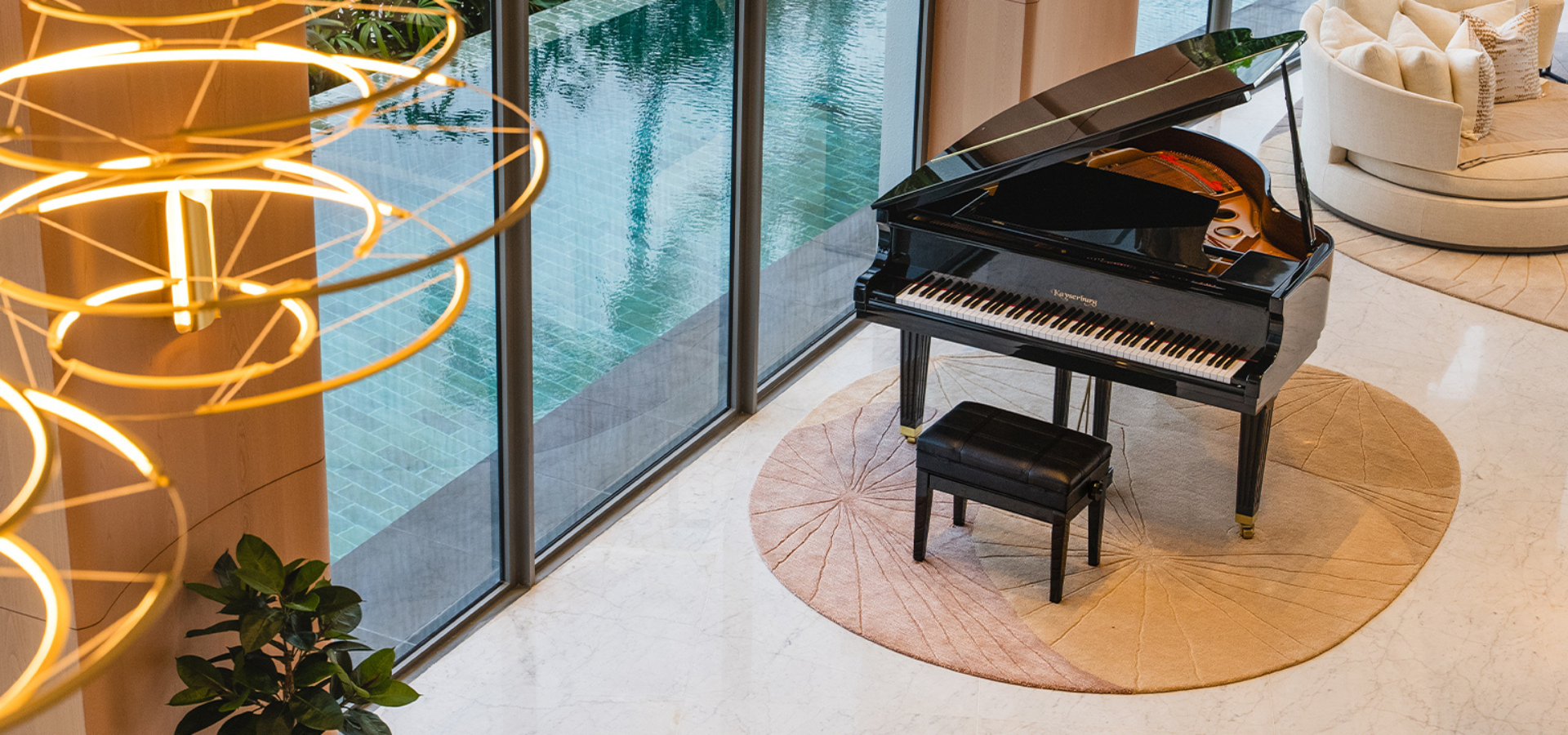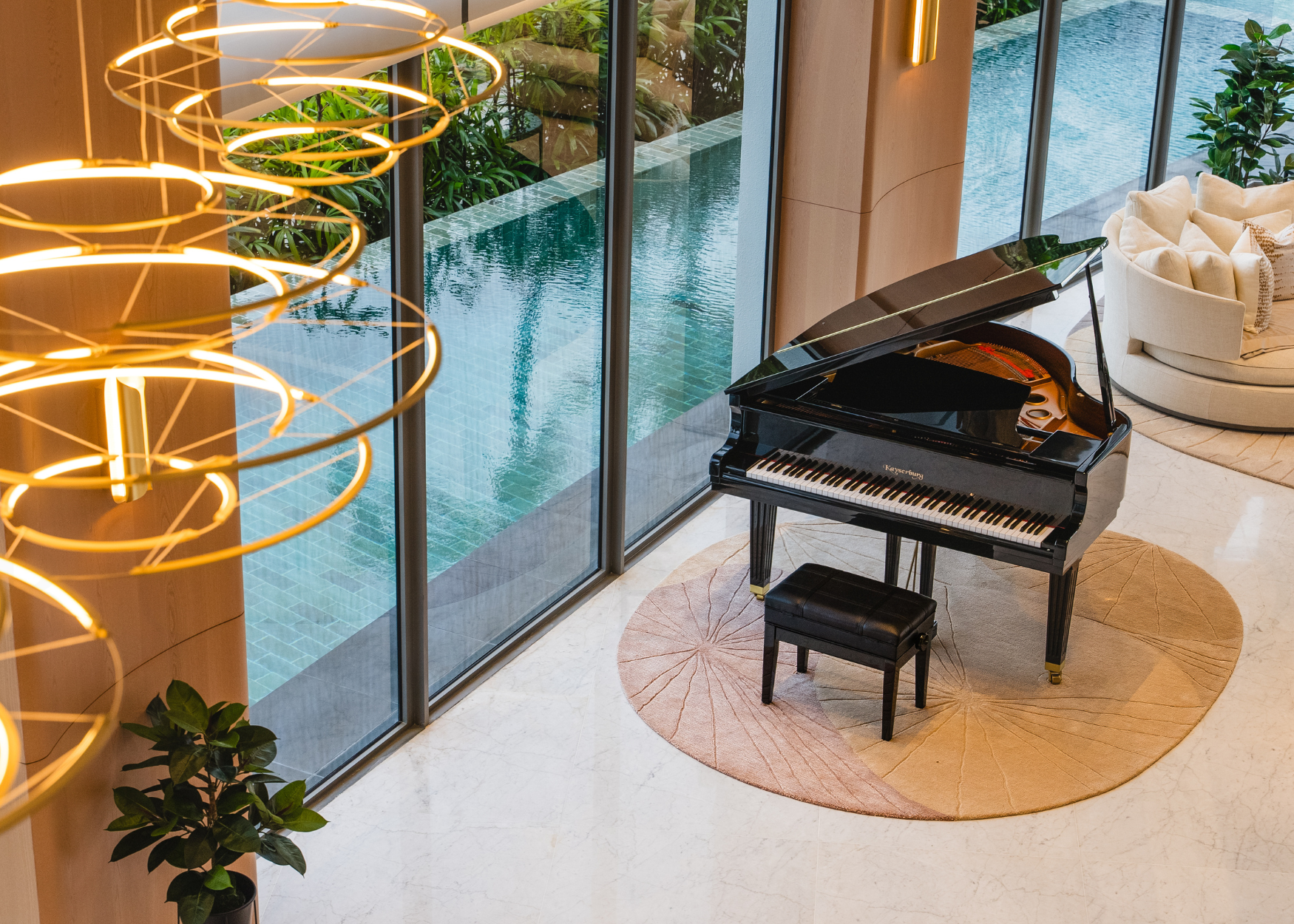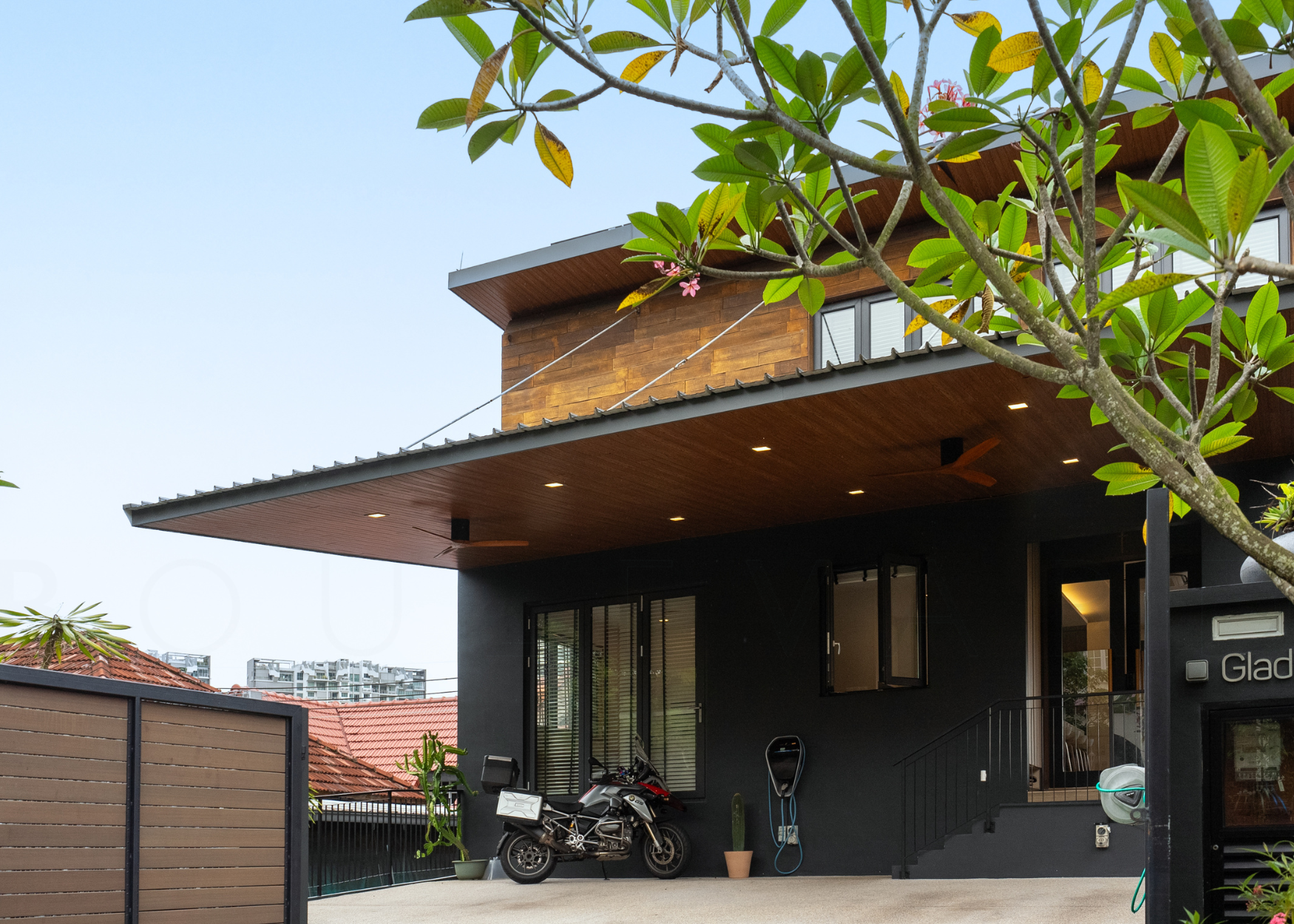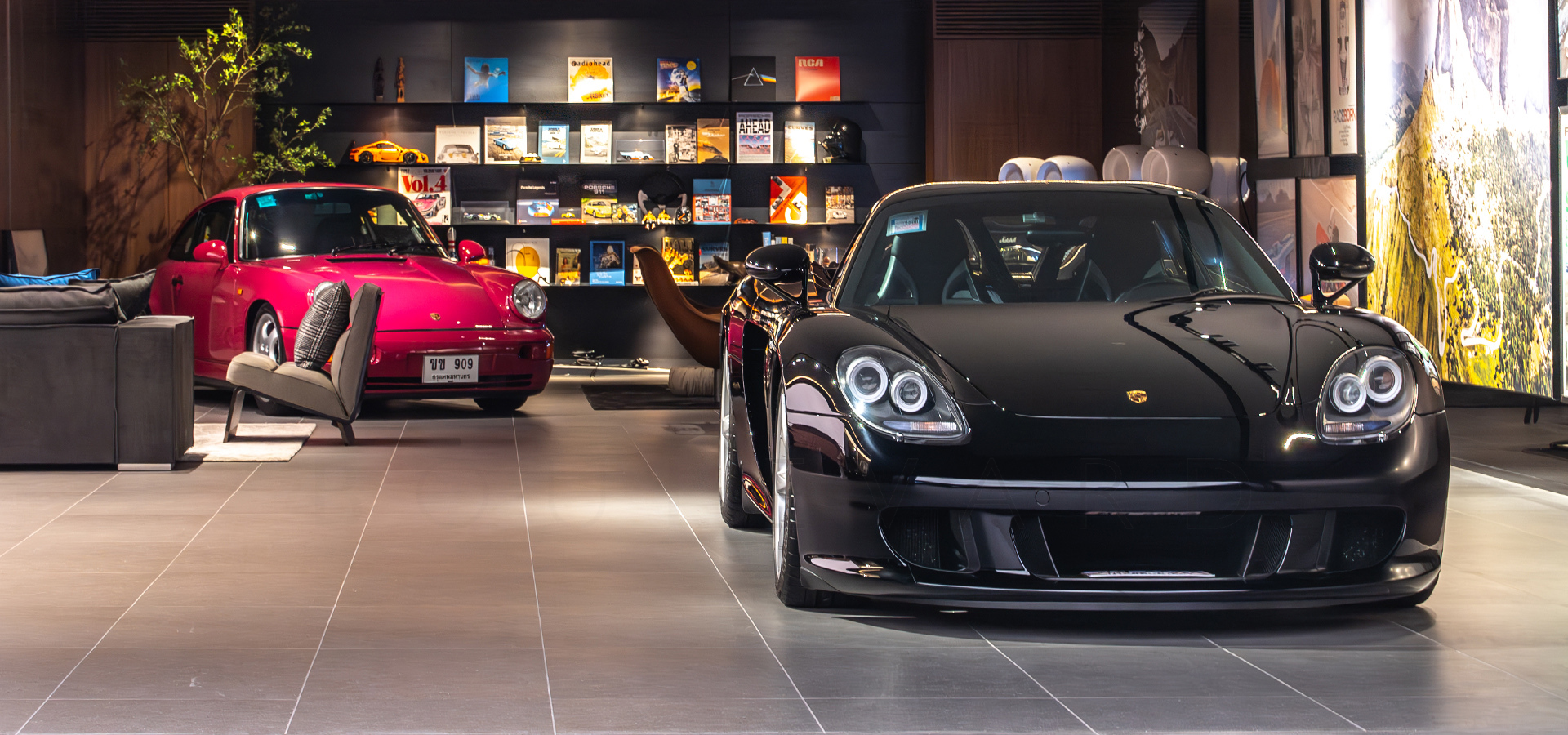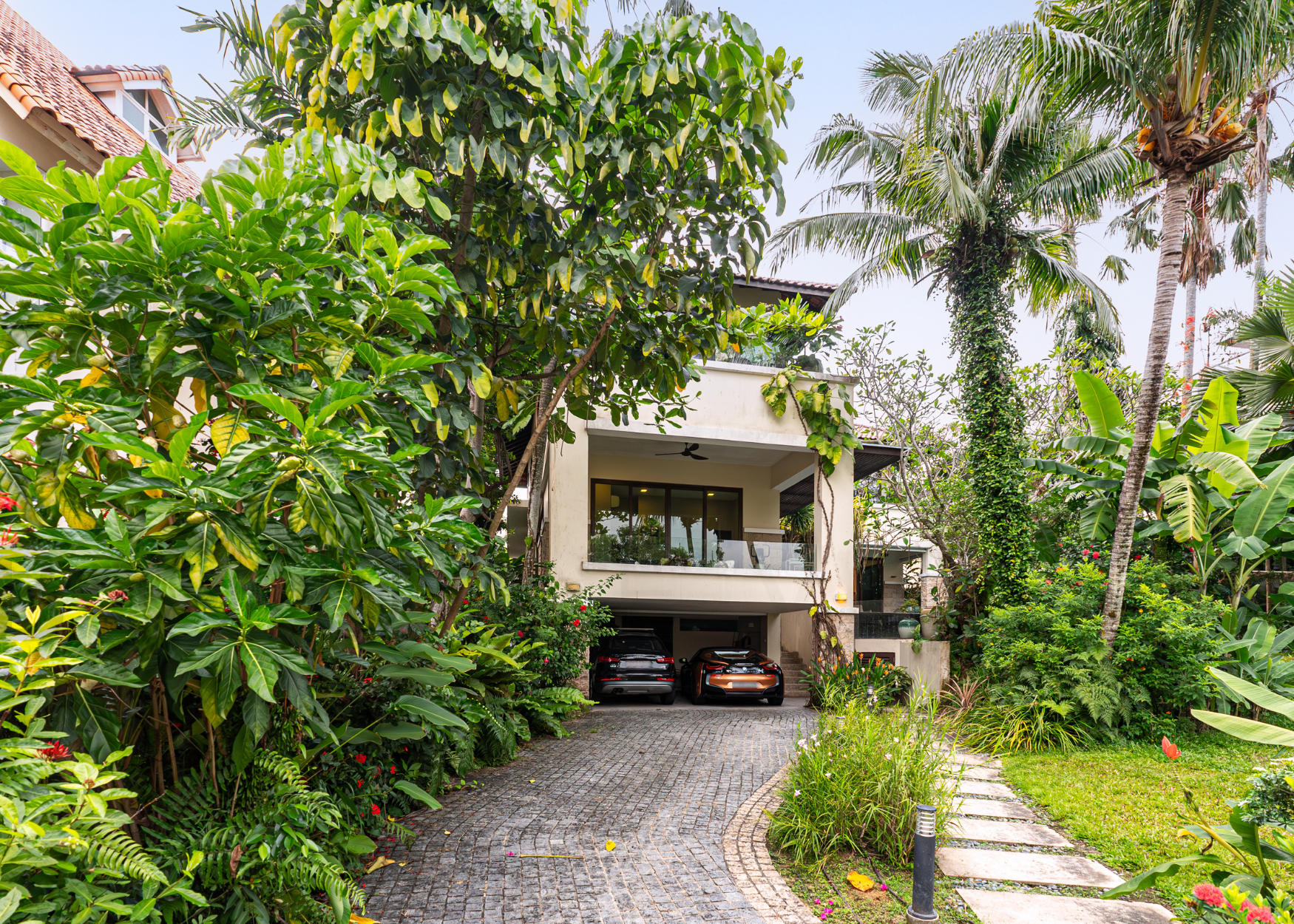Architology’s collaboration with Tappeti rugs takes centre stage at a revamped maisonette in Seascape, Sentosa
Tappeti CEO Karinna Gobbo and Architology co-founder Terrence Quah talk us through their collaboration on a glamorous line of custom rugs, and the transformation of a newly refurbished duplex in the waterfront Sentosa condo, Seascape.
Boulevard: How did the collaboration start?
Gobbo: I started Tappeti 18 years ago out of my passion for design and for working with interior designers. In Asia, we’ve got so many talented designers, but I feel design needs to be elevated a bit more and the value of design should be greater in our community. So I was here in Singapore 18 months ago, and had the idea while I was planning for the year ahead – we have done one-on-one collections before, but we’ve never done five artists in one collection. So the idea was to work with prominent local designers to create a collection that represents themselves as artists. It’s about elevating the awareness of design in Singapore.
Blvd: So how did you work with the five designers – what was the brief, or the scope?
Gobbo: The only brief we gave was around approximate size. They could use custom shapes, custom colours and different textures. We did choose the manufacturing type – we have a range of options from hand knotted to hand tufted – but mainly for the lead times.
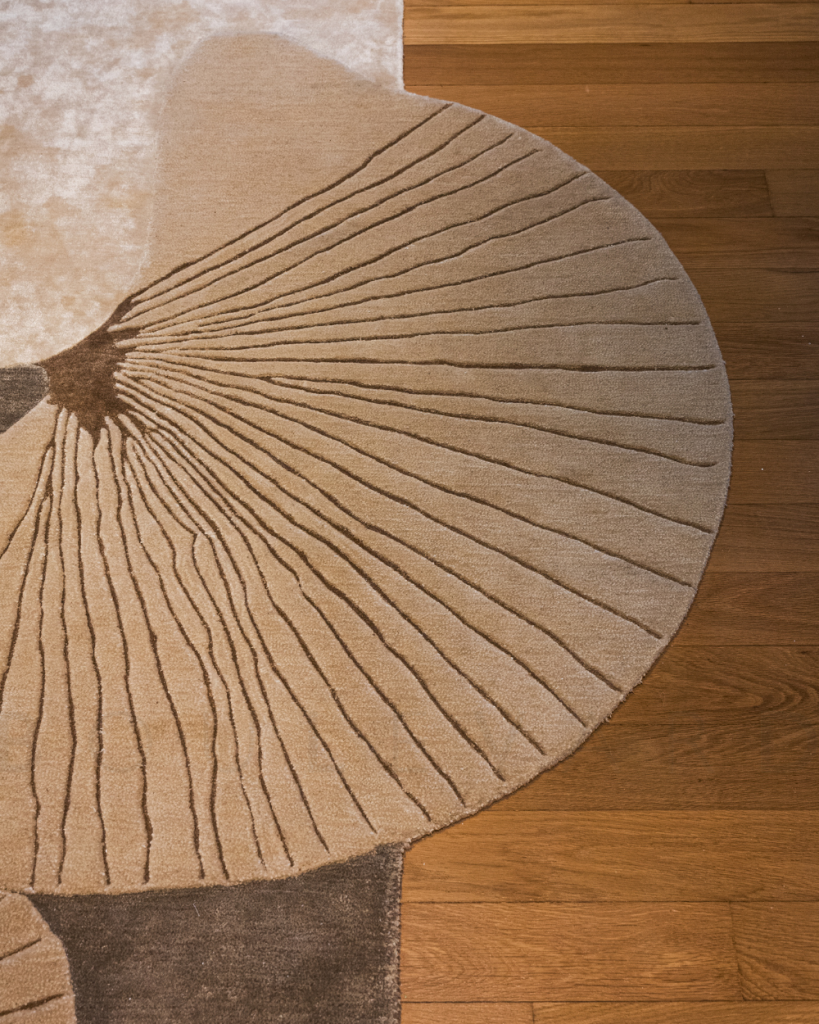
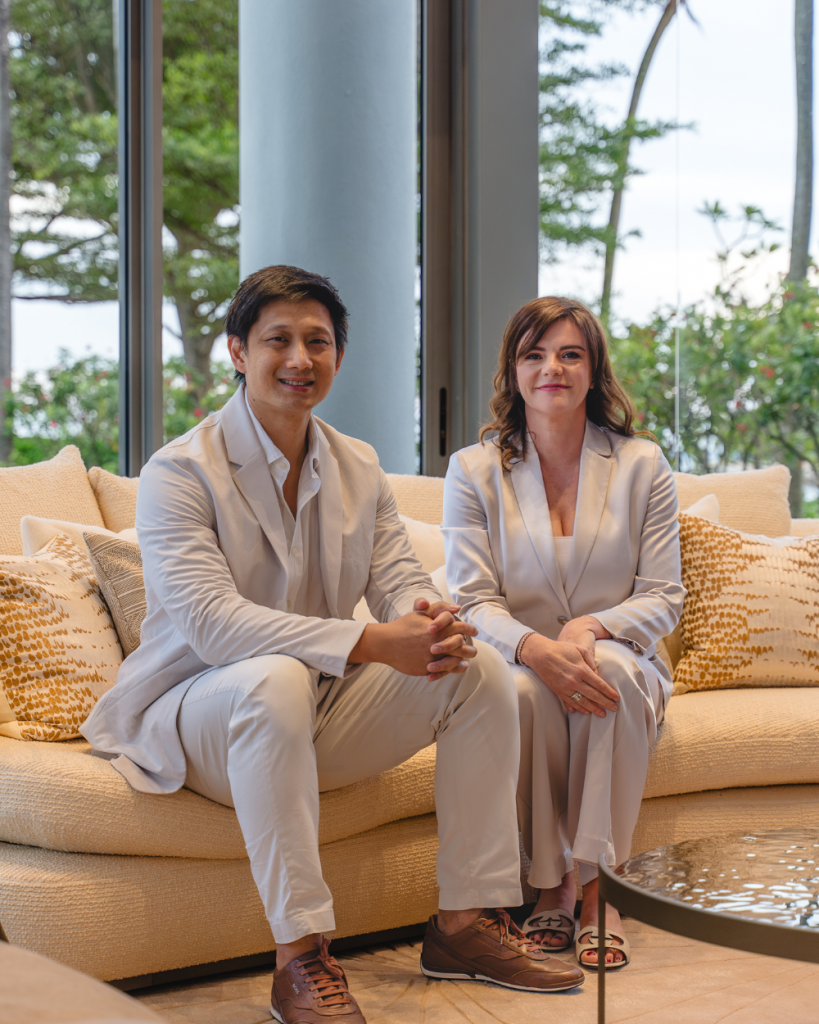
Blvd: And how did you feel the designs turned out?
Gobbo: Well Terrence’s presentation was incredible – I was just blown away. The level of detail, there’s a point of difference. It has great options for flexibility, for different colour palettes.
And then with this fit out [of the Seascape maisonette], Terrence had designed the rug and he said, “Hey, I’m doing this development, can we get this out in time?”
Quah: We found Tappeti while working on another residence here, and that was when I learned that we could swap out a lot of the colours, and do custom colours, which impressed me quite a lot. And so when Karinna proposed that we do a design collaboration, I was like, “Oh, that’s exciting. I’ve always wanted to do this.”
But then you start thinking about it, and you realise, “Oh no, what am I gonna do?” It took a while, but I think from the very start, the first thing I knew we wanted to do was to make sure that whatever we created would be something we could use.
As I approached it, I realised that one of the important things rugs need to do in a space is to create a sense of movement, because spaces tend to be very static otherwise. Everything’s fixed, but you have that one piece that occupies a big part of the floor area, and that’s your chance to create that sense of dynamism. And I was searching for the language of what could do this – and came across the ‘paper fan’. What fascinated me about it was, it’s just made of straight lines and folds, but the very fact of opening it creates an elegant curve, which implies a certain movement.
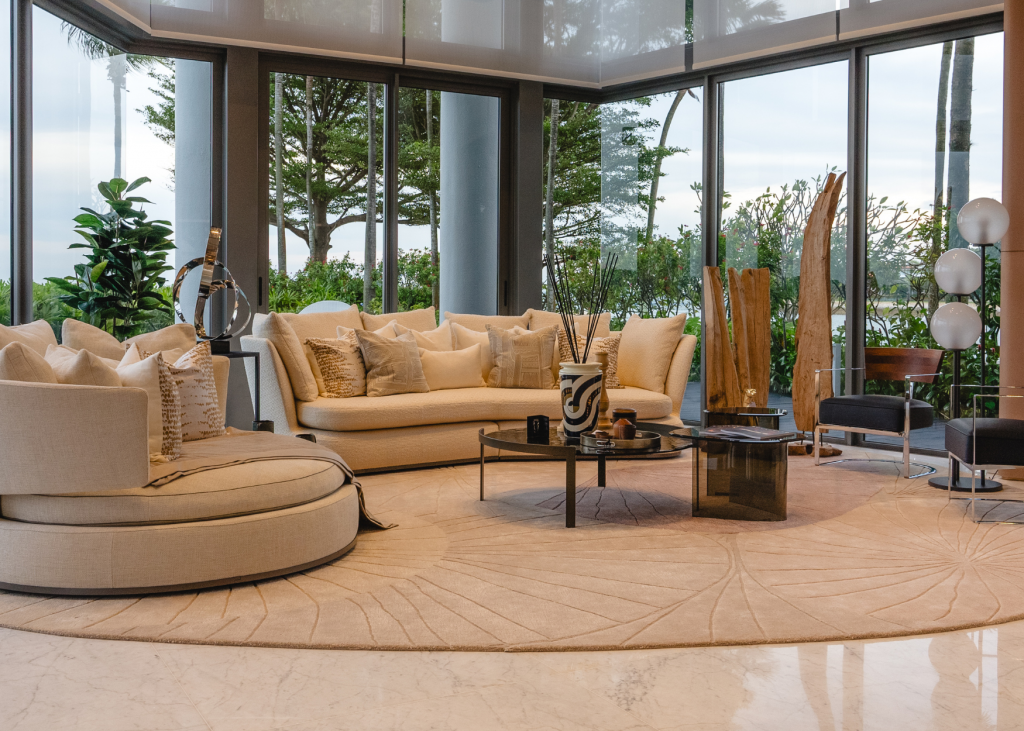
Gobbo: We only had a six to eight weeks of lead time from memory. For the short lead time, we needed to use air freight, but it didn’t fit in – we have no restrictions on size or making, but you have restrictions on air freight. So we cut the rug in the line of the movement, and you wouldn’t even notice it.
Blvd: One of the challenges with rugs always seems to be: How is it going to look once it’s in a space, with a whole lot of furniture on it?
Gobbo: That’s why we work with designers. Most of our team have design backgrounds, so when they’re engaging with customers, it starts with the aesthetic – what is the space like? As we custom-make, this can always be a challenge, however, we produce custom design renders that represent your vision.
It is a challenge visualising the final look, but we do custom samples, and we mainly work with architects and designers, so it is very much their vision, what they want for the space.
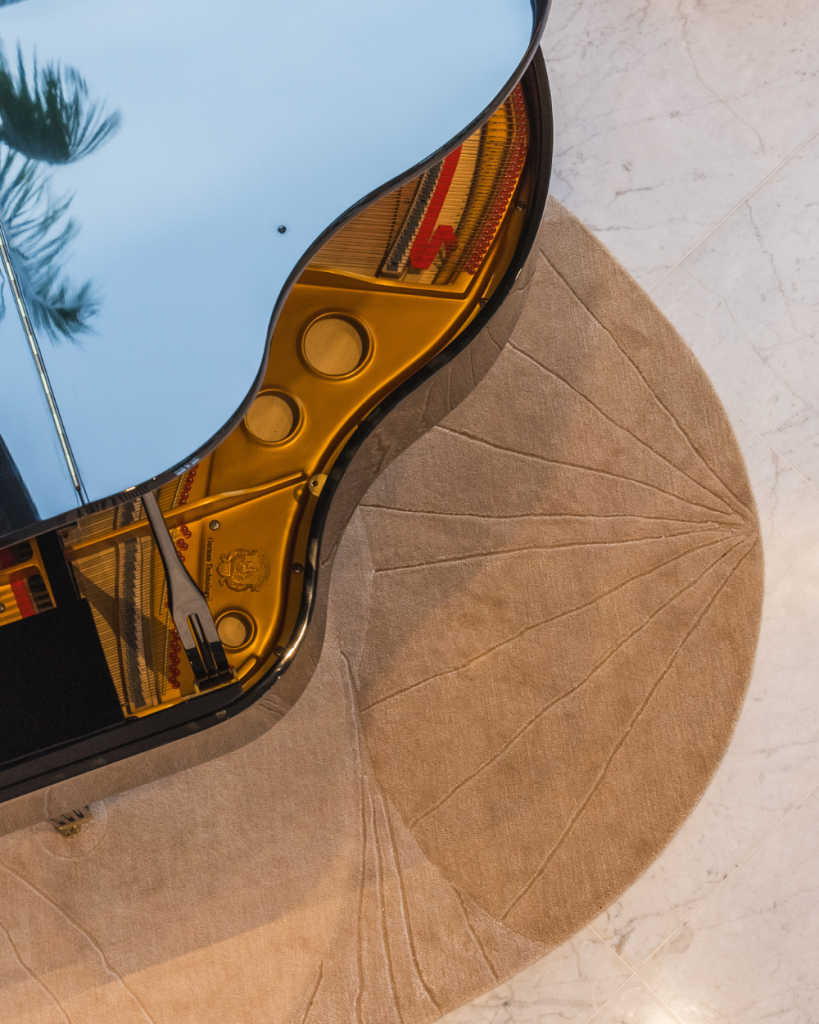
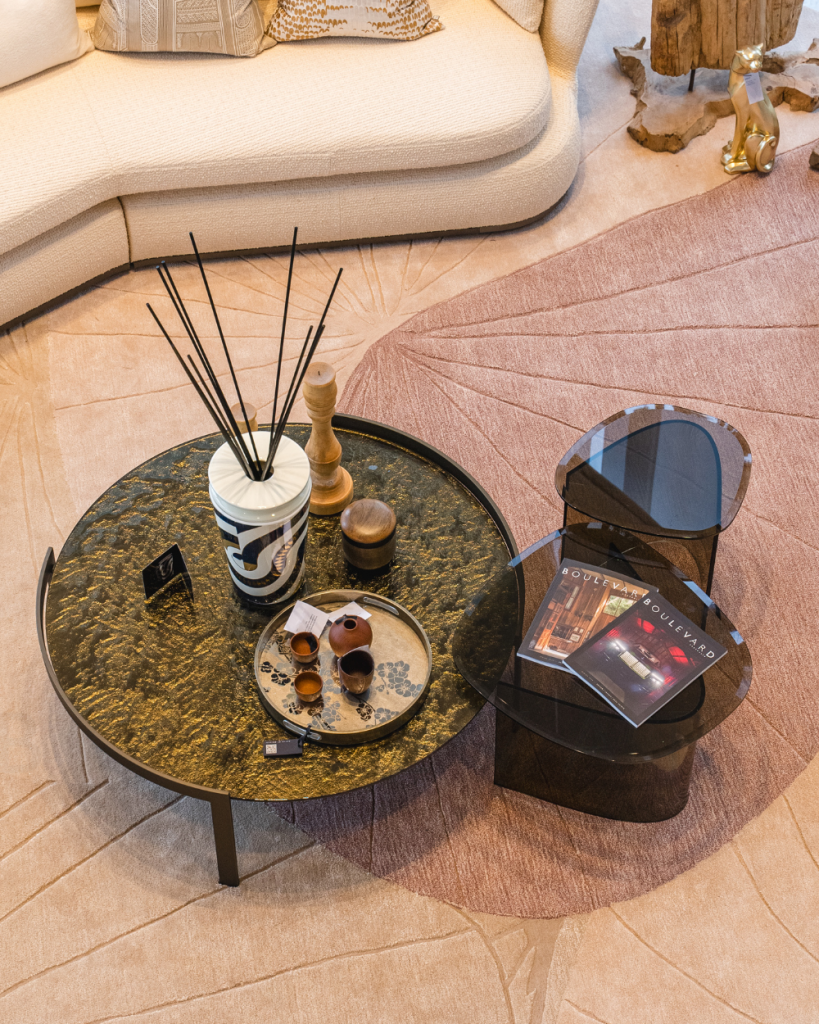
Blvd: So the capability runs from picking something out in store, all the way through to customisation and tailoring and even commissioning?
Gobbo: That’s right. About 90% is custom. So for instance, someone might say, “I would like Terence’s rug, but I want it in blue and pink.” It’s Terrence’s design and copyright, so he’d need to approve the colours.
We have completed projects that are bright and colourful. For example, we recently completed a fit-out for the BHP head office, the rug was 6m x by 10m and in 38 colours with vibrant bright blues, greens and reds. This has been designed as the feature foyer piece, created by an indigenous artist.
We launch at least two to three collections a year, and we went into carrying stock three or four years ago. But often a designer will come to us with a client who wants to replicate something significant to the family, or the history of a business. Some might want a particular palette, or logos. Our scope is pretty much anything at all, and that can sometimes be a little bit overwhelming, but with the right vision, it’s actually quite inspiring.
We’re dealing with workmanship, and humans make errors, but our documentation process is very thorough – to the point that I think I drive my team mad sometimes.
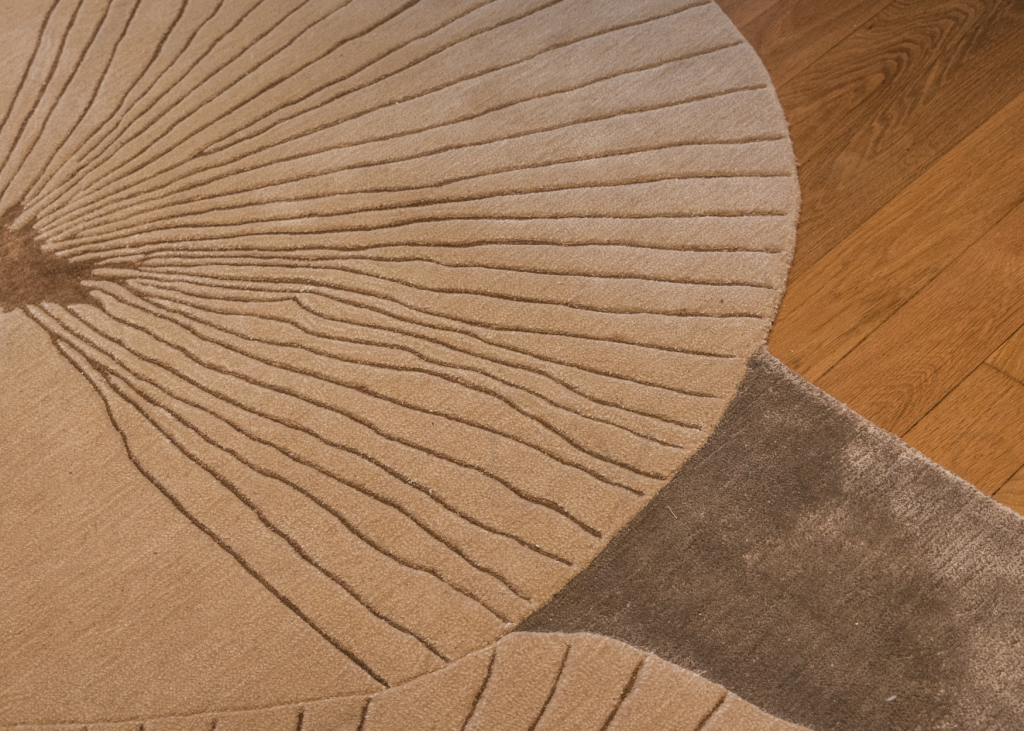
Blvd: How are rugs trending generally – where is the demand at?
Quah: Well, I think first of all, we have to cross the hurdle of getting the client to understand the need for a rug. To agree that even though they have a very fancy marble floor and all, a rug does set the tone of the space.
Gobbo: One thing we’ve noticed is, in Singapore, it’s mainly more neutral colours. But they’re also braver by doing different things in each different space. Whereas in Australia, you get more of a uniform theme, but it’s bolder with colours.
This contrast in design tastes has also affected how we approach having a presence in Asia. So we now have two websites – .sg and .au. And there are variations in our collections based on that as well.
Quah: People here like to be very safe. Perhaps sometimes their personalities are not so colourful.
Blvd: Possibly that’s also why they hire designers – to perhaps express a personality that they themselves want to bring in, and to live in a space that someone else has had to imagine for them. Someone who also understands how far to push it.
Gobbo: That’s what we’re here to do – to push our boundaries with design. We work globally, we have projects in New York, we’re working for a Sheik in Saudi Arabia who has carpeted ceilings, carpeted walls, the staircase is more than 100 square metres, and it’s totally next level.
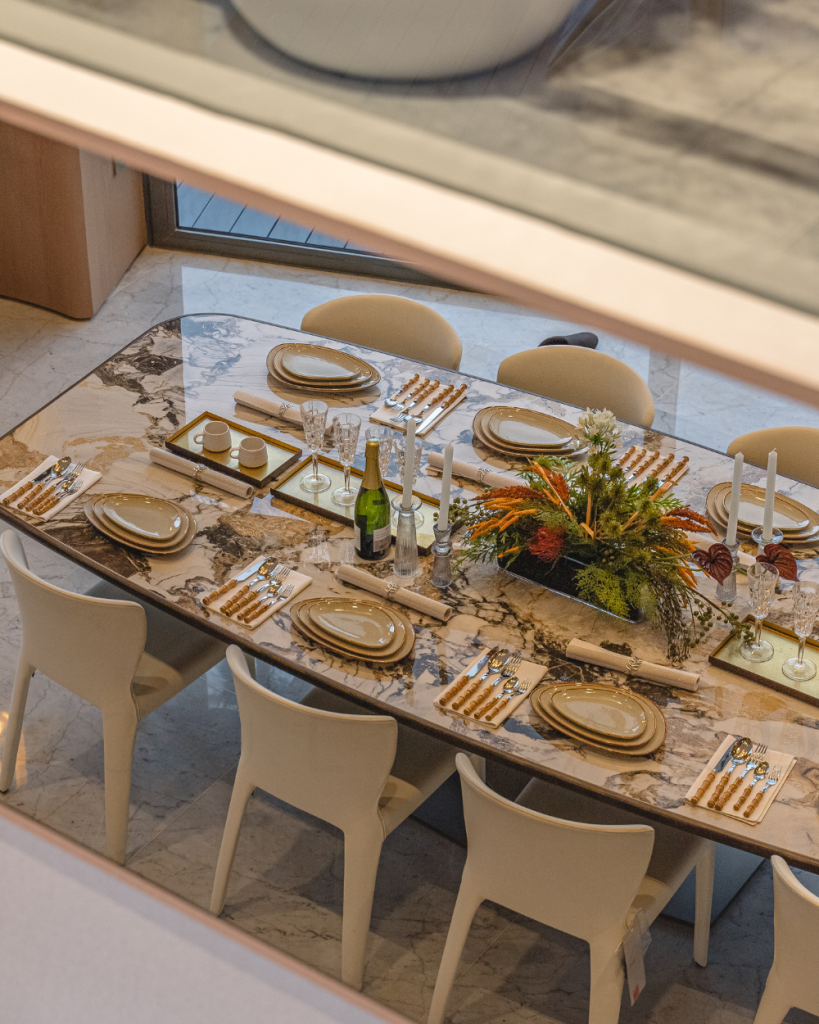
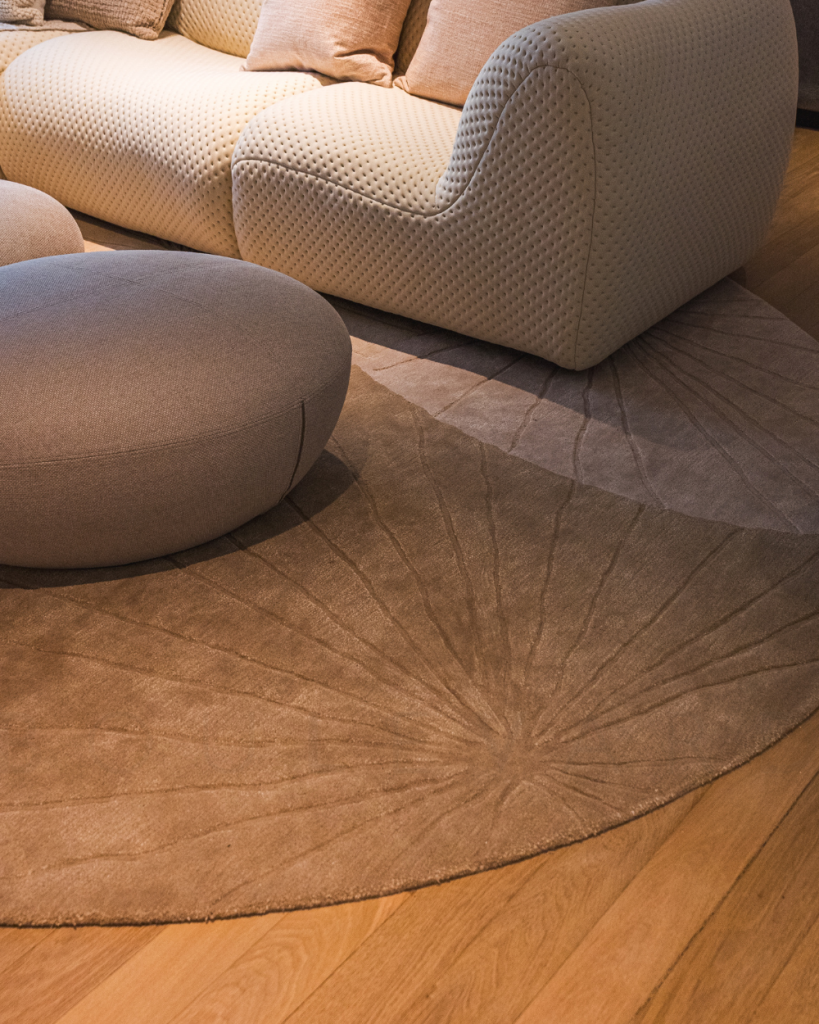
Blvd: And in terms of unique designs and commissioning, what’s the scope?
Gobbo: You can do almost anything – it’s just labour intensive. For example, we normally design by measurements, so this is 2mm, 3mm, etc. But we did a very detailed collection called ‘Griglia’, which means ‘grid’ in Italian, and we designed it by knots: so three knots in yellow, two knots in white, and then go up by one knot. Our makers were like, “Are you joking? Do you actually expect a human to make this?” And yes, we do, but we expect that it’s going to cost more, and take a lot longer.
It is still all done by hand. And it’s never going to be achieved by artificial technology. We manufacture predominantly in India and also Nepal, and it’s very much a skilled trade. All the wools are hand dyed, and they’re matched literally to the design by eyesight. The manufacturers have an old recipe book, and will literally flip through the recipe book to find all the colours.
Each client signs off on a scale drawing, and then it’s projected – pretty much with an old-fashioned projector – and the hand-tufting is then done through a handgun. But hand-knotting is as if you’re knitting. So they take longer in production again.
We often get asked, “Can you speed our production up?” And with this level of intricacy, the answer is ‘no’.
Read next:
